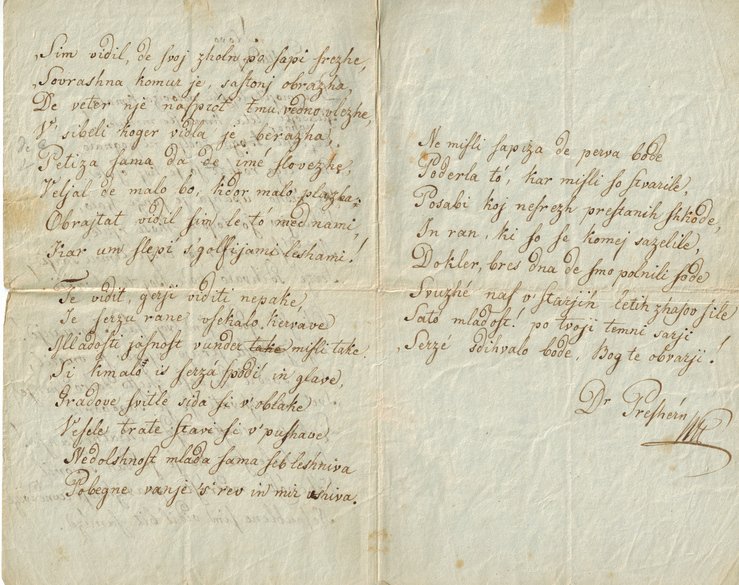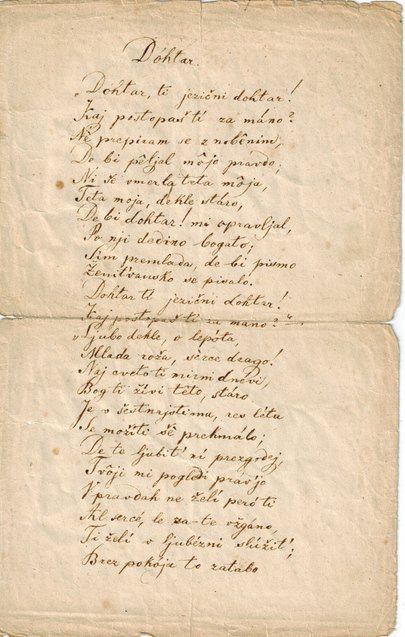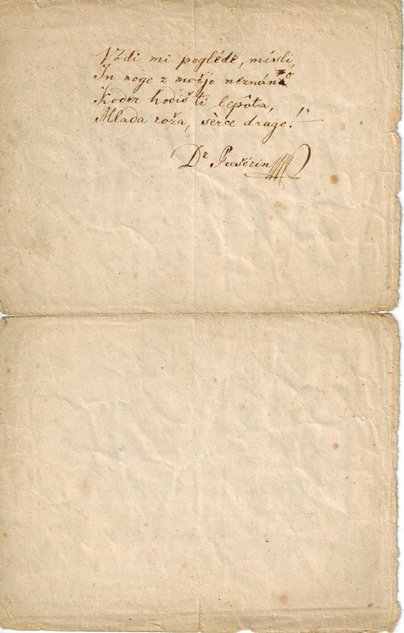Permanent Collection
In addition to its wide collection of printed materials, archival documents, and fine and decorative arts, the Slovenian Museum and Archives is proud to preserve the original manuscripts of two works by France Prešeren, who is considered to be Slovenia’s most important poet. The manuscripts to “A Farewell to Youth” (Slovo od mladosti) and “Doc” (Dohtar) were donated by Evgen Favetti and are now permanently housed in our Prešeren Room.
Discovery of the Prešeren Papers
In 2016 the previously uncatalogued Prešeren manuscripts were discovered by Luka Zibelnik, lecturer of the Slovenian language at Cleveland State University and volunteer at the Slovenian Museum and Archives.
Zibelnik found the manuscripts with the assistance of Andrej Gregor Rode, then the Slovenian Consulate General, who reported that a Slovenian-American man named Evgen Favetti had informed him about the discovery of two Prešeren manuscripts. “He invited me over to have a look at what this was all about. At first, the e-mail was greeted with some skepticism, and we had to exclude the possibility of the manuscripts being fakes or facsimiles,” recounts Zibelnik.
According to Zibelnik, all doubts about the manuscripts’ authenticity vanished in April 2016, when the men met at the consulate. It was immediately clear that they were dealing with an extraordinary piece of cultural heritage. Favetti expressed his wish to put the manuscripts on display for the general public and later to donate the manuscripts to the Slovenian Museum and Archives.
About the Prešeren Papers
Both manuscripts are signed and in good condition. “A Farewell to Youth” is written in the old Bohorič script, whereas “Doc” appears in the Gaj script. In some parts, the two manuscripts differ from the previously known versions of the poems. That of “A Farewell to Youth” dates to a period before it was published in the first issue of Krajnska čbelica in 1830, while that of “Doc” dates to a period after the poem appeared in the fourth issue of Krajnska čbelica in 1833—and before the revised version published in his collected poems in 1847.
Photos of Prešeren Papers

Original manuscript of “A Farewell to Youth” (page 1) by France Prešeren

Original manuscript of “A Farewell to Youth” (page 2) by France Prešeren

Original manuscript of "Doc” (recto) by France Prešeren

Original manuscript of "Doc” (verso) by France Prešeren
